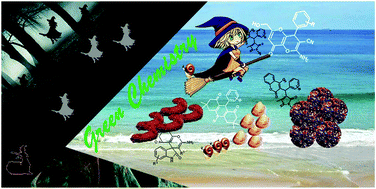Waste-to-wealth transition: application of natural waste materials as sustainable catalysts in multicomponent reactions
Abstract
A wide variety of wastes are generated all around the world from fruits, marines, and plants, among several other sources. The remains of animal skeletal encompass many precious compounds, which undergo decomposition in the environment. Biowaste contains renewable chemical materials, which are effective in various appliances including the treatment of wastewater, synthesis of high-value nanomaterials, and useful catalysts. Biowaste materials have excellent chemical properties, which are not only attractive in terms of price but are environment friendly and can be deployed as effective catalysts in the synthesis of organic compounds. The entire synthetic strategy conforms to the main principles of green chemistry that aim to minimize the production of toxic materials in assorted reaction conditions. Herein, the methods for the preparation of nanomaterials including magnetic nanoparticles and their catalytic activities are exclusively elaborated in the domain of greener and atom-economic multicomponent reactions; the high-value utilization of abandoned yet abundant renewable resources from biowaste is beneficial for the environment.

- This article is part of the themed collection: Green Chemistry Reviews


 Please wait while we load your content...
Please wait while we load your content...